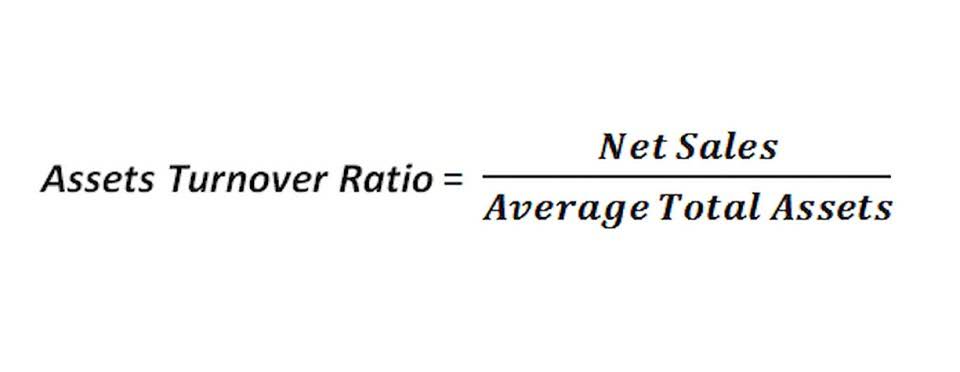Content
- How to make a sales accounting entry: Services
- Journal Entry for Credit Sales and Cash Sales
- GAAP Rules for the Percentage of Sales Method
- How do changes in accounts receivable impact a company’s cash flow statement?
- What are debits and credits?
- Credit Sales Definition
- Determining a Firm’s Percentage of Credit Sales

Let’s say that you make a sale to a customer on credit. The total bill is $240, plus a 5% sales tax, which is $12. The customer charges a total of $252 on credit ($240 + $12). Credit SalesCredit Sales is a transaction type in which the customers/buyers are allowed to pay up for the bought item later on instead of paying at the exact time of purchase. It gives them the required time to collect money & make the payment. Credit PeriodCredit period refers to the duration of time that a seller gives the buyer to pay off the amount of the product that he or she purchased from the seller. It consists of three components – credit analysis, credit/sales terms and collection policy.
- In the case of the federal government, it refers to the total amount of income generated from taxes, which remains unfiltered from any deductions.
- If you need to calculate your credit sales, all you have to do is subtract your cash sales from your total sales.
- When you pay the interest in December, you would debit the interest payable account and credit the cash account.
- We’ll talk more about this later when we discuss accounts payable.
- Lets assume that the customers on an average paid $60 in cash for those 100 laptops, so cash received would be $6000.
Maturity date or in an end-of-period adjusting entry if the financial statements are prepared before the note matures. Bad debts expense when a debt is recognized as uncollectible. An adjusting entry is made at the end of the accounting period for the.. The selling company usually pays a fee to the buying company. Both approaches are used to speed up cash collections. Is the selling of accounts receivable to another company. The account to be debited is dependent on the mode of sale and further on the mode of receipt when it is a cash sale.
How to make a sales accounting entry: Services
It is one of the secondary book of accounts and unlike cash sales which are recorded in cash book, sales book is only to record credit sales. The amount entered in the sales book is on behalf of invoices supplied to purchasers. A sales journal entry is a journal entry in thesales journalto record a credit sale of inventory. All of the cash sales of inventory are recorded in the cash receipts journal and all non-inventory sales are recorded in the general journal. Finding a business’s percentage of credit sales will tell you what proportion of their total sales were made as credit sales.

In accounting, the roll forward is an ending balance for one accounting period that becomes the starting balance in the next period. Explore the definition and examples of fixed asset roll forward, and consider construction equipment to gain understanding.
Journal Entry for Credit Sales and Cash Sales
Overall, the goal should be to increase this ratio over time. However, a very high ratio may mean that the business is using overly-strict collection policies.
How do you record a ledger?
- Turn to the Cash page of your ledger.
- Turn to the Accounts Receivable page of your ledger.
- Update these pages as new journal entries arise.
Learn the definition of a purchase journal and understand its different entries. A receivable is created that will later be collected from the customer. This replaces the increase in cash noted in the preceding journal entry. It helps record the transaction involving the sale of goods on credit by the company appropriately, keeping track of every credit sale involved. RevenueRevenue is the amount of money that a business can earn in its normal course of business by selling its goods and services. In the case of the federal government, it refers to the total amount of income generated from taxes, which remains unfiltered from any deductions.
GAAP Rules for the Percentage of Sales Method
If you don’t know your total sales, multiply the price of each product by the number of units sold, then add them all together. For example, if you sold 100 units at 10 dollars each, your total sales would be 1,000 dollars. Then, subtract the cash sales from your total sales to give you the credit sales.
Discover different inventory valuation methods, including specific identification, First-In-First-Out , Last-In-First-Out , and weighted average. The net realizable value is the return that you would expect to get on an item after the item has been sold and the cost of selling that item has been subtracted. Learn more about net realizable value’s definition, methods, and importance. When you sell a good to a customer, you’re getting rid of inventory. And, you’re increasing your Cost of Goods Sold Expense account. Your COGS represents how much it costs you to produce the item. You’ll also need to increase your Revenue account to show that your business is bringing in the amount the customer owes.
How do changes in accounts receivable impact a company’s cash flow statement?
We’ll talk more about this later when we discuss accounts payable. This lesson is about payroll accounting and the obligations of the employee and employer. You’ll learn how to use payroll journal entries and incorporate numbers into financial statements, including income statements and balance sheets.

Here, in the drop down box next to Apply to Sales Order No., select the sales order number applicable to the sale. The inventory items ordered will then appear in the rows. Shipped For each item ordered, enter the number of that item shipped to the customer. Amount Peachtree automatically calculates the total amount of each type of item shipped to the customer. Sales Tax Select the sales tax applicable to the sale. In the example above, the sales tax selected is GAGWINN.
What are debits and credits?
Although the accounts receivable account includes a $1,000 receivable balance, this just means that the customer owes you $1,000. But when the customer finally pays off the $1,000 bill, you need to zero out that How to Record a Credit Sale receivable. This requirement to record sales revenue at the time that goods or services are provided means that accounting for sales revenue is slightly more complicated than you may have first guessed.
How do you record financial transactions?
Journal Entries
The most basic method used to record a transaction is the journal entry, where the accountant manually enters the account numbers and debits and credits for each individual transaction. This approach is time-consuming and subject to error, and so is usually reserved for adjustments and special entries.
Credits sales together with cash sales and installment sales compose the net sales of the entity, which is found in the income statement. Credit sales represent sales not paid immediately at the date of invoice. As previously mentioned, credit sales are sales where the customer is given an extended period to pay. There are several advantages and disadvantages for a company offering credit sales to customers. Whether you’re creating a business budget or tracking your accounts receivable turnover, you need to use debits and credits properly. When selling on credit, there is a chance that the customer may go bankrupt and fail to pay you. The company will also have to write off the debt as bad debt.
Consider the same example above – Company A selling goods to John on credit for $10,000, due on January 31, 2018. However, let us consider the effect of the credit terms 2/10 net 30 on this purchase.

The sales journal is a special journal that is used to record all credit sales. Every transaction that is entered in sales journal essentially results in a debit to accounts receivable account and a credit to sales account.
So, although you may not need to worry much about the mechanics of Journal Entry 1, you should understand how this journal entry works so that you can set up QuickBooks correctly. Understand how t-accounts work, and how job flow cost accounting can be used to track cost of goods sold. An https://www.bookstime.com/ expense is incurred for the cost of goods sold, since goods or services have been transferred to the customer. DebitedDebit represents either an increase in a company’s expenses or a decline in its revenue. And will come under the assets side of the balance sheet under existing assets.
- Here’s how Little Electrode, Inc. would record this sales journal entry.
- Doing this provides you with greater accuracy since it accounts for changing product prices in addition to all cash sales.
- O Straight-line method when the asset provides approximately equal utility for each year of its useful life.
- The $1,000 debit to accounts receivable and the $1,000 credit to accounts receivable net to zero.
- When a company sells on credit, it attracts new customers who would otherwise not buy from the company.
- For example, the term 2/10, net 30 allows a customer to deduct 2% of the net amount owed if the customer pays within 10 days of the invoice date.
- Charlene Rhinehart is an expert in accounting, banking, investing, real estate, and personal finance.
The process to record a cash sale with a sales invoice is the same process as recording a part cash and part credit sale. The only difference is that you record the full amount of the invoice in the Receive Payment window rather than a partial cash payment. Accounting of inventory purchases, or merchandise that is stored to be sold directly to customers, involves calculating far more than simple stock and unit costs. Learn how the original price, discounts, returns/allowances, transportation, and ownership/transfer fees are all factored into accounting for inventory purposes. Selling on credit requires you to keep two records, the first being the record of the credit sale and, subsequently, payments made by the customer.
Determining a Firm’s Percentage of Credit Sales
This duplicate copy is kept by the seller with him because the entry in the sales journal is made on the basis of it. Then, after the payment arrives, cash is debited for $970 and accounts receivable is credited for $970. Using the example from above, let’s illustrate how the credit term of 2/10, net 30 works. Gem Merchandise Co. ships $1,000 of goods and the customer returns $100 of unacceptable goods to Gem within a few days. At that point, the net amount owed by the customer is $900. If the customer pays Gem within 10 days of the invoice date, the customer is allowed to deduct $18 (2% of $900) from the net purchase of $900.
- This increases the company’s interest payments at the end of the year.
- Since we deposited funds in the amount of $250, we increased the balance in the cash account with a debit of $250.
- This means that Gem’s net sale ends up being $900; the customer’s net purchase will also be $900 ($1,000 minus the $100 returned).
- This topic first explains how to enter common information in the Sales/Invoicing window.
- For instance, if 800 dollars of your 1,000 were cash sales, your credit sales would be 200 dollars.
Sum up all returns made on credit sales over the course of the period. Then, subtract the total value of these returns from credit sales. Lets assume that the customers on an average paid $60 in cash for those 100 laptops, so cash received would be $6000. To create a sales journal entry, you must debit and credit the appropriate accounts. Your end debit balance should equal your end credit balance. Recording a sales transaction is more detailed than many other journal entries because you need to track cost of goods sold as well as any sales tax charged to your customer. Where one entry for cash sales and another for credit sales has been recorded.
She is the founder of Wealth Women Daily and an author. An adjustment to the price was december 3, 2018, invoice amount of the nov. 21 sale should have been 9,000.